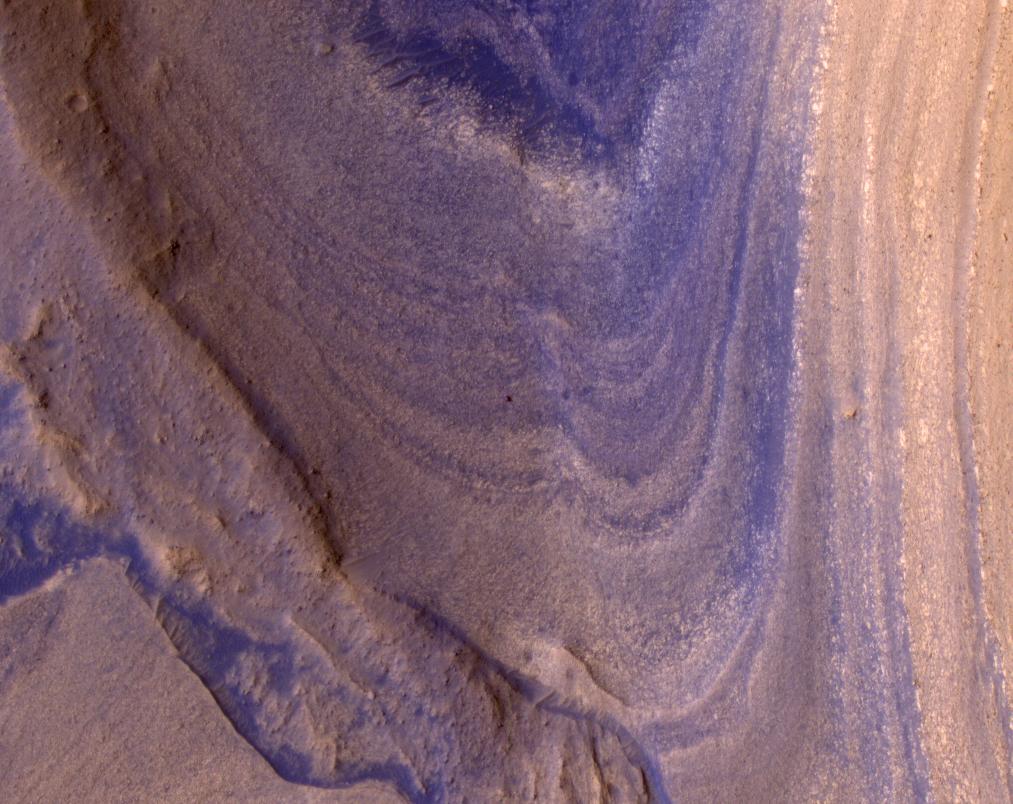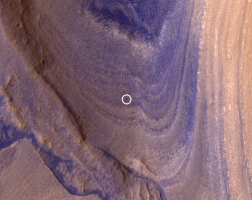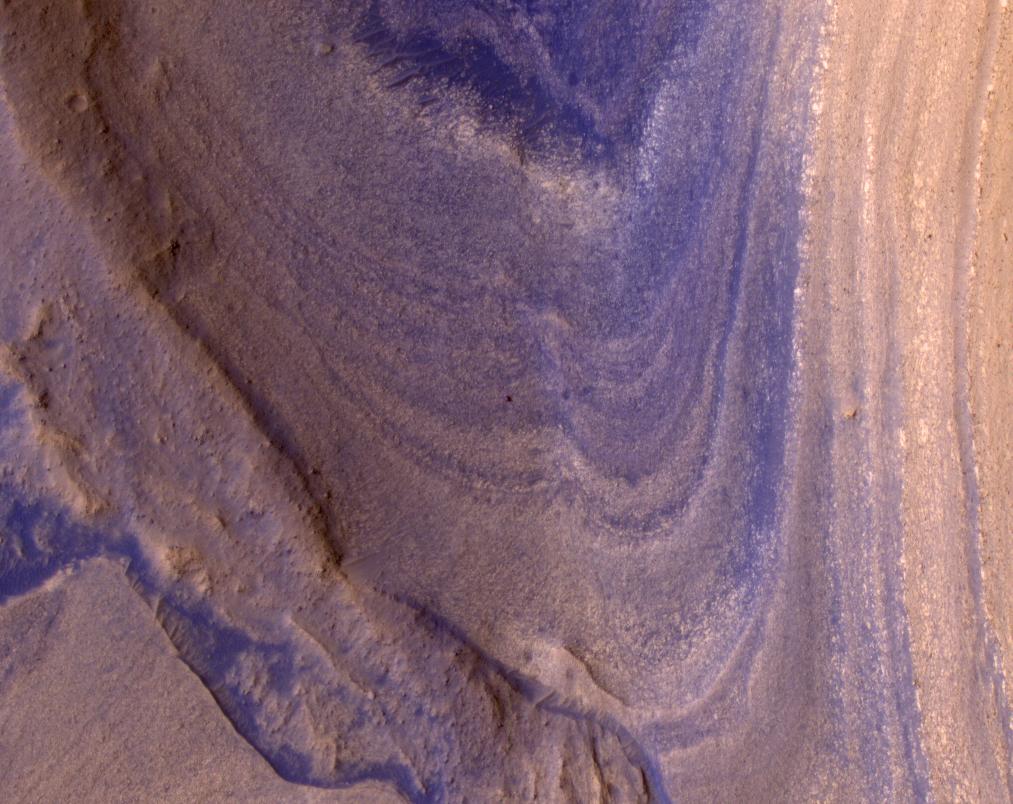HiRISE Spots Curiosity Driving Toward Upper Gediz Vallis

| Credit | NASA/JPL-Caltech/University of Arizona |
|---|---|
| Language |
|
Figure A
NASA's Curiosity Mars rover appears as a dark speck in this image captured from directly overhead by the agency's Mars Reconnaissance Orbiter, or MRO. The orbiter is equipped with a camera capable of viewing objects the size of a dinner table on the Red Planet's surface.
The camera, called the High-Resolution Imaging Science Experiment (HiRISE), has viewed spacecraft on the surface many times before. Here, it captured Curiosity driving up a steep slope on Dec. 29, 2023, the 4,051st Martian day, or sol, of the rover's mission.
Curiosity is seen in an area striped with alternating dark and light bands. Scientists are interested in learning what differentiated the materials on the surface to form these different bands.
Figure A: the same image with Curiosity circled.
NASA's Jet Propulsion Laboratory, a division of Caltech in Pasadena, California, manages MRO for the agency's Science Mission Directorate in Washington. Lockheed Martin Space Systems is the prime contractor for the project and built the spacecraft. The HiRISE camera was built by Ball Aerospace and Technology Corporation and is operated by the University of Arizona.
Images from HiRISE and additional information about MRO are available online at: https://mars.nasa.gov/mro/ or http://HiRISE.lpl.arizona.edu.
Curiosity was built by JPL, which leads the mission on behalf of NASA's Science Mission Directorate.
For more about Curiosity, visit: http://mars.nasa.gov/msl


